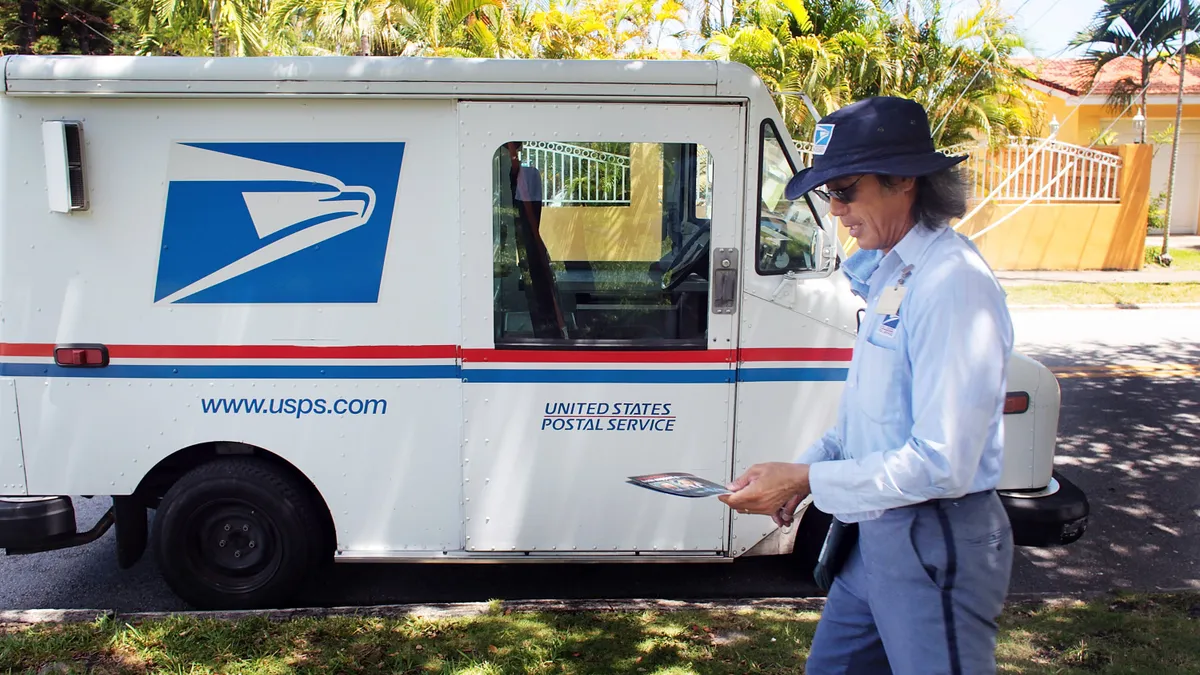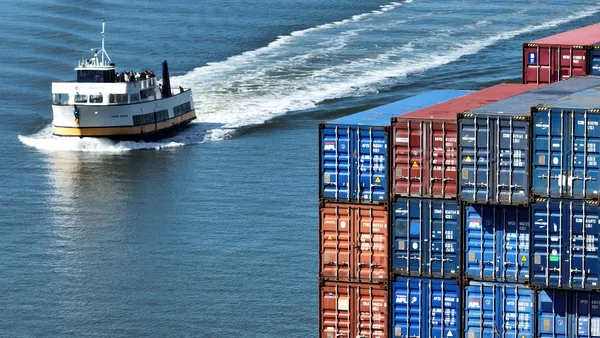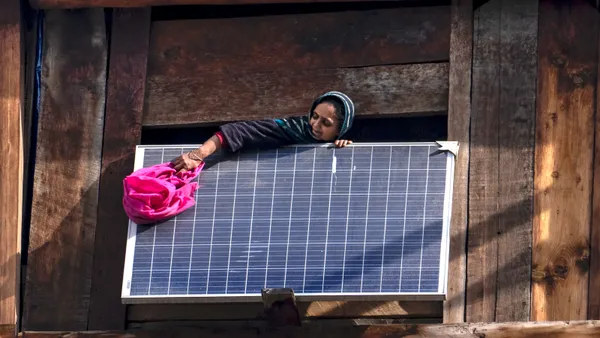Dive Brief:
- The United States Postal Service set new sustainability targets for the fiscal year 2030 to reduce its greenhouse gas emissions, support the circular economy and increase environmental awareness across the organization, it announced Tuesday.
- By the end of the decade, USPS said it plans to slash scope 1 and scope 2 emissions generated from fuel and electricity use by 40% and cut back on scope 3 emissions generated from services purchased by 20%, compared to a 2021 baseline. The organization plans to achieve these reductions by shifting freight transportation from air to ground, optimizing delivery routes for trucks and carriers, and purchasing low-emission and zero-emission vehicles.
- The postal service also aims to reduce its operational costs by $5 billion as part of its 10-year Delivering for America plan, put in place in 2021 to lift the organization from a financial and operational crisis. USPS said its cost-reduction initiatives would also significantly reduce its emissions by eliminating “wasteful and unnecessary operating activities.”
Dive Insight:
USPS said its sustainability goals are also focused on strengthening the circular economy, which it plans to do through diverting 75% of waste from landfills, increasing packaging recycled content to 74% and increasing packaging recyclability to 88%, and upping its procurement of on-site renewable energy by 10% by 2030, compared to a 2021 baseline. The organization said it will also purchase more renewable energy certificates.
Aside from setting climate-forward goals throughout its operations, USPS said it plans to expand environmental awareness throughout the organization. This will include providing on-site and online training and tools to all its applicable employees to ensure policy and regulatory requirements are communicated and incorporated into operations.
The postal service plans to shed operating costs by reducing its regional and local network transportation by at least $2.5 billion, through streamlining how mail and packages are moved regionally. This change is expected to eliminate thousands of trips made each day and decrease dependency on air transport. It also aims to shave off processing, distribution and delivery costs by $2.5 billion as well, mainly through insourcing previously outsourced operations, modernizing its facilities and improving operation tactics and schedules.
“As we transform our operating processes and invest in new automation, new technologies, and upgraded facilities and vehicles, we will generate significant efficiencies that reduce our costs, minimize waste across all functions of our operations and slash our carbon footprint,” Postmaster General and CEO Louis DeJoy said in the press release.
The updated climate strategy comes shortly after USPS unveiled its first set of electric vehicle charging stations at its South Atlanta sorting and delivery center in January and announced plans to install charging stations at hundreds of centers across the country this year. USPS said these centers would be equipped with the infrastructure to collectively power more than 66,000 electric delivery vehicles. At the time, the agency also debuted new battery-powered commercial delivery vehicles, domestically manufactured by the Ford Motor Company, that joined its EV fleet.
The organization said the procurement of EVs and charging stations was enabled by its modernization efforts and improved financial standing, which includes $3 billion in funding through the Inflation Reduction Act.
USPS has faced a string of financial problems in recent years. The postal service reported a $6.5 billion net loss for the fiscal year of 2023 in November, noting it would not break even this year as first-class mail fell to the lowest volume since 1968. It also said its financial results were impacted by the high inflation on operating expenses.
More recently, USPS reported in January it lost $25 million in revenue on one of its returns services due to pricing errors on 22.8 million packages. The errors occurred between October 2020 and August 2023 and were the result of the Postal Service’s pricing verification process not tracking the type of facility where Parcel Return Service packages were retrieved from, a key factor in determining rates.











